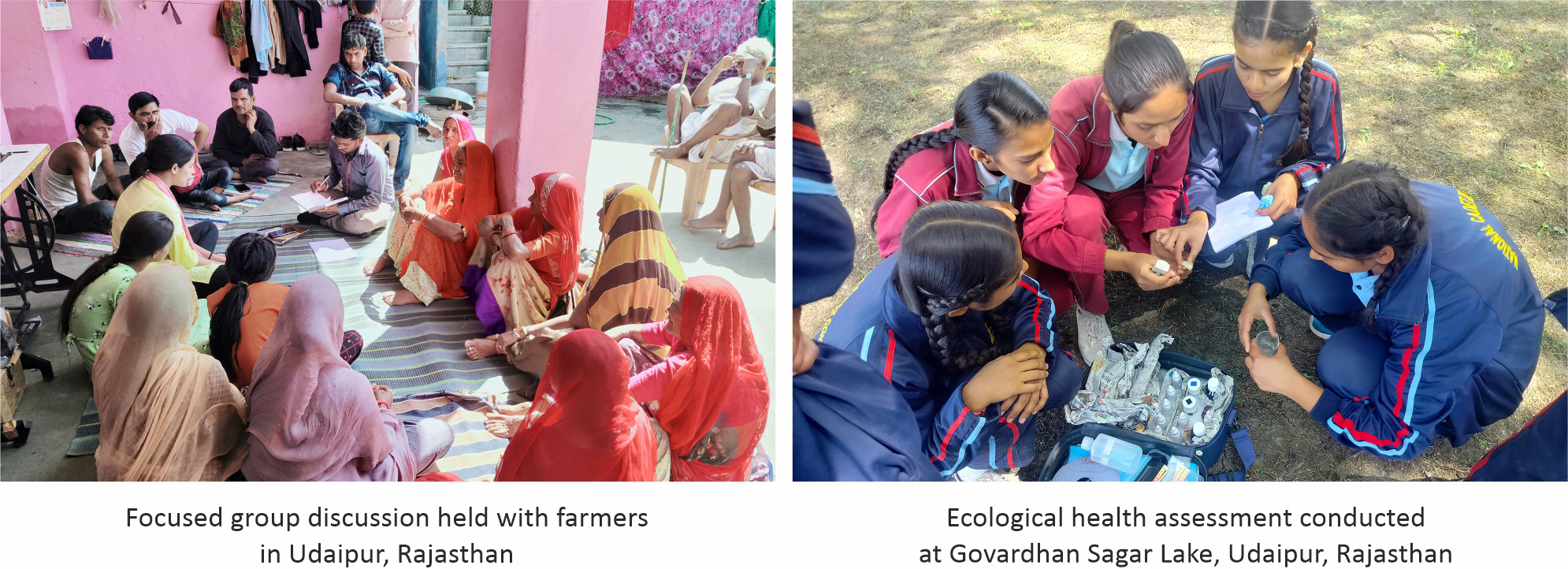|
Connecting Citizen Science with Climate
Communication In this context, Citizen Science is one of the foremost instruments to gain public participation and connecting policy with praxis. The process is not limited to listening or reading highly qualified research but engaging the public in hands-on activity. Development Alternatives has adopted the Citizen Science approach in its ongoing study supported by the Danish Ministry of Foreign Affairs – DANIDA (Danish International Development Agency) Fellowship Center on Integrated Water Resource Management of Ahar River Basin, Udaipur. The study aims to improve the basis for developing sustainable integrated water resources management in the Udaipur district, Rajasthan. As part of the intervention, a Citizen Science Network involving 25 institutions has been formed in Udaipur. The network engages students at schools and universities as the primary target group owing to their knack for building knowledge and learning diverse subjects. The students are trained through various communication tools for collecting data on rainfall, water quality, ecological health, and well monitoring of water resources in Udaipur.
Figure 1: Methodology for the study Climate Action Communication Tools for Citizen Science The tools for citizen science communication are designed in a contextualised manner that sensitise citizens to know about their water resources as well as provoke them to design solutions for the water problems. The communication framework mainly comprises questions that start from why there is a need to think about water resources, how citizens can strengthen themselves to know the state of their water resources, and end at how citizens can be the foremost drivers of climate resilient and sustainable water management practices. The tools include:
How Climate Communication Through Citizen Science Influences PolicyIncreased citizen science engagement has the potential to pave the way for influencing policy for climate change action through the evidence-based research. The interventions allow for a collaborative action involving policymakers, academicians, subject experts, and citizens to co-create knowledge and solution in a participatory model. Past deliberations and research have adopted Citizen Science approach in various field such as air quality, biodiversity, health. To quote the example of Transforming Climate Knowledge with and for Society (TRACKS)2 where collaboration between scientists and citizens was used to identify new methods of collecting climate information. Nonetheless, it was limited to training and data collection. The next steps for Citizen Science approach are to enable citizen scientist to hold the policymakers accountable and develop a robust Citizen Science policy framework. Such a policy is urgently needed to support enthusiastic citizen scientists to function as a policy advocacy group for climate change action. Endnotes 1 https://unesdoc.unesco.org/ark:/48223/pf0000378841
Tanya Issar
Nidhi Sehrawat |

